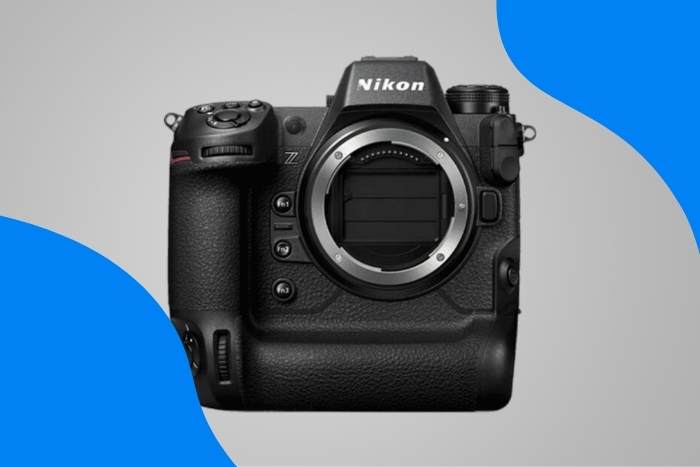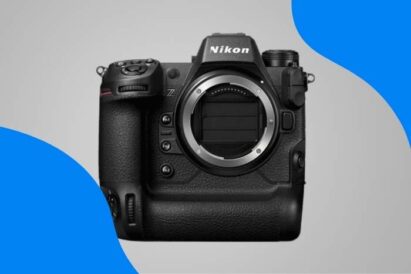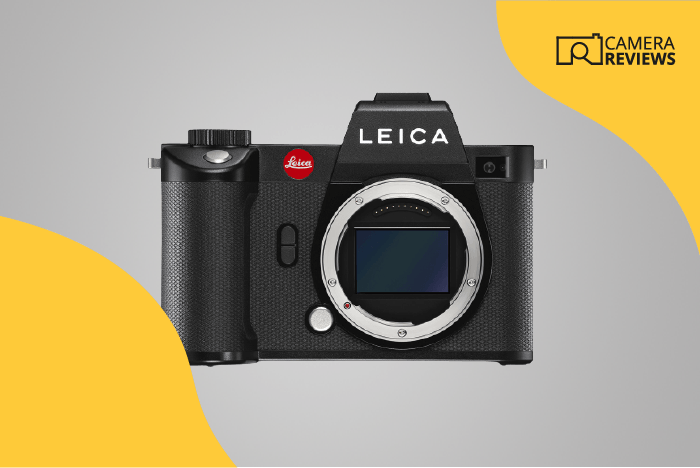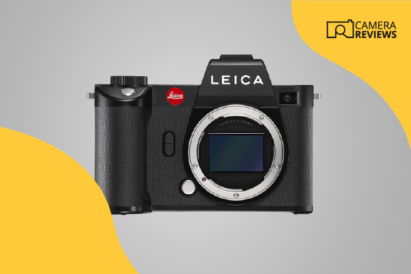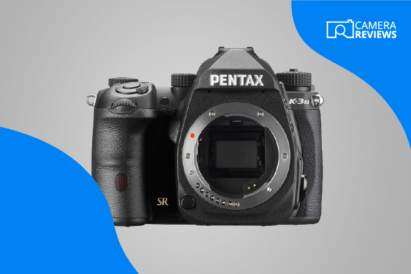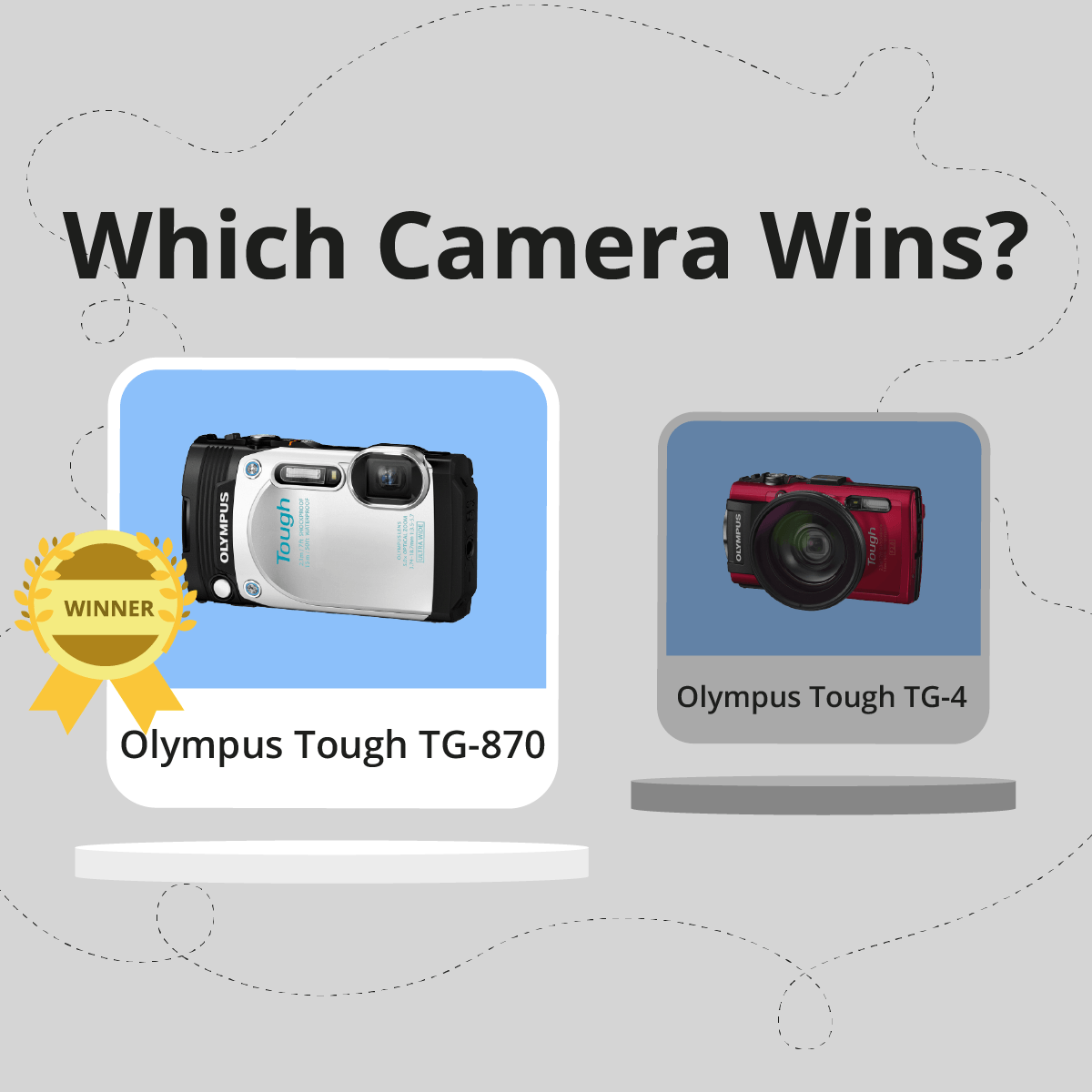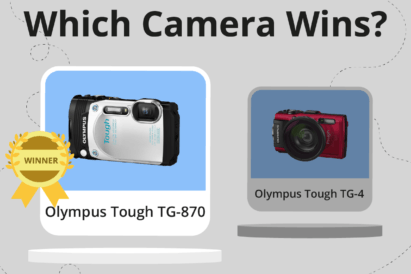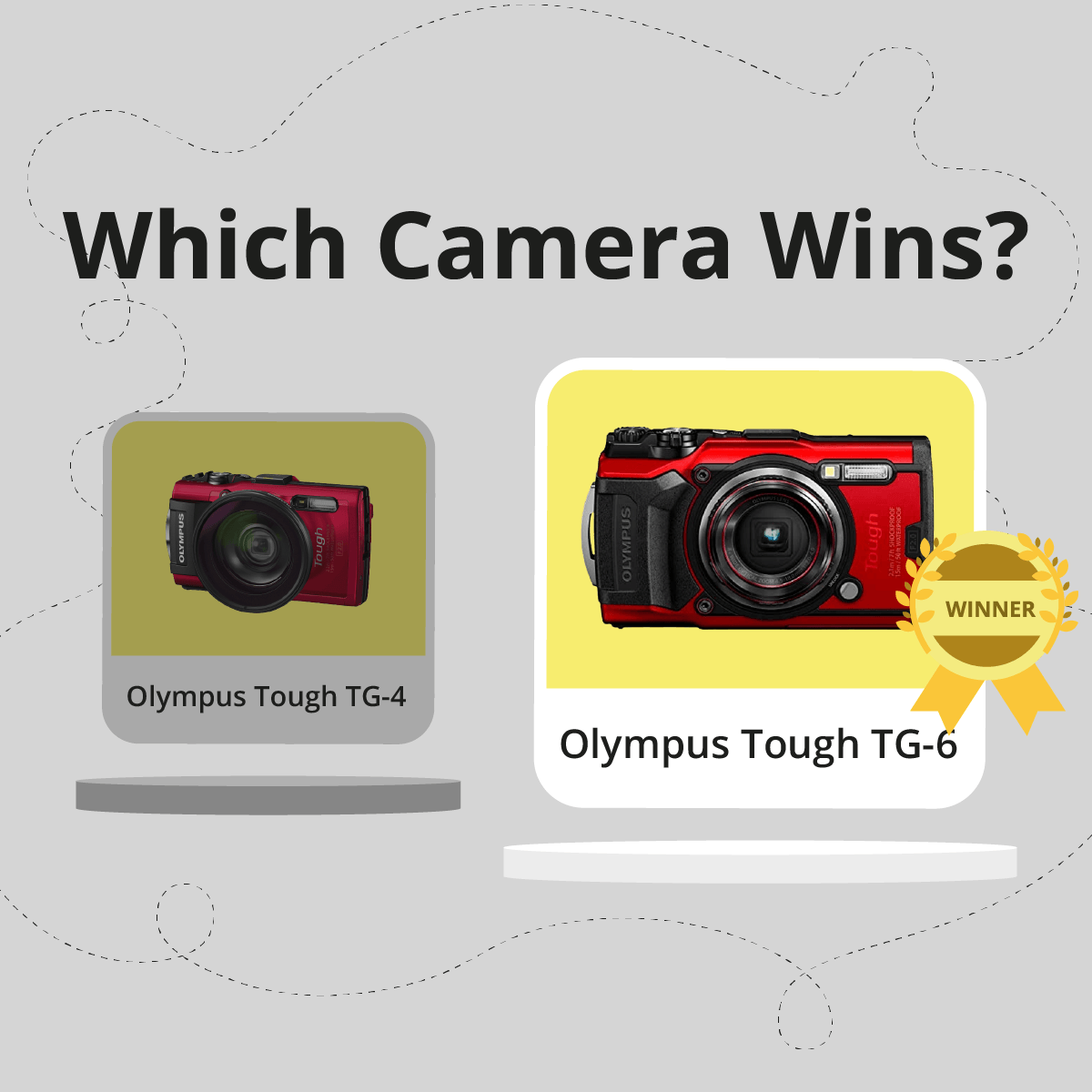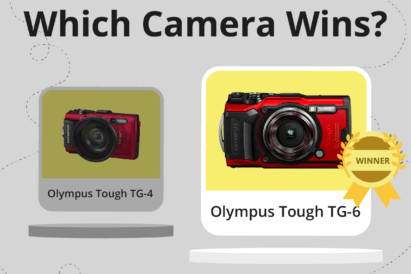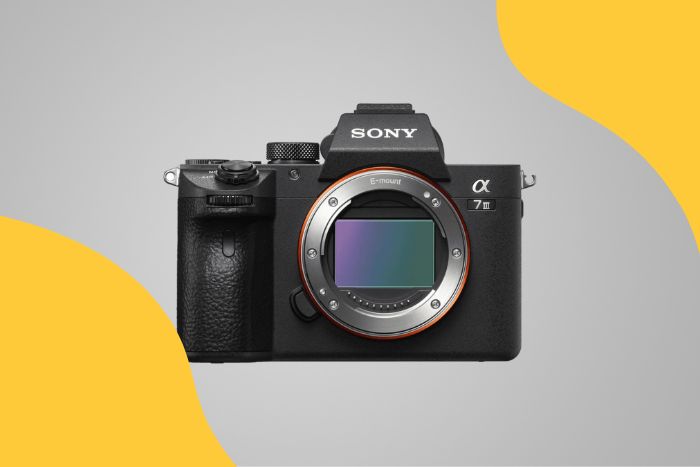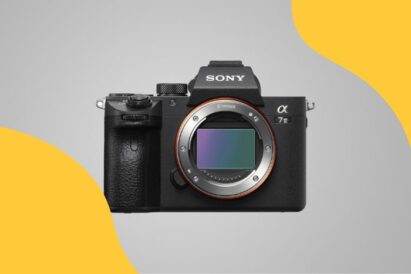The best rugged cameras on the market are sometimes the best waterproof cameras. But it depends on what you mean by “rugged camera.” Do you want something to take with you on a beach holiday? If so, a compact waterproof camera like the Olympus TG-6 is fine. But if you’re more interested in taking video, then a GoPro action camera is just the ticket.
But if you have ambitions to be a “proper” photographer and don’t intend to do any shooting underwater… your range of options expands! You might think about bridge cameras, DSLRs, or mirrorless models. Although, they’ll only be weather-sealed. And you wouldn’t want to drop them.
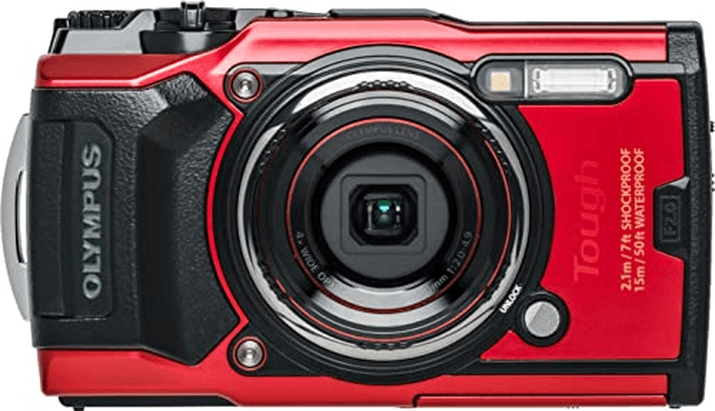
Olympus Tough TG-6
What Are the Best Rugged Cameras?
Let’s have a quick look at a summary of the best rugged cameras on the market.

- Very strong and durable body
- Waterproof to 50 ft (15.5 m)
- RAW file shooting capabilities
- Excellent macro shooting
- Smooth 4K video recording

- Easy-to-use menus and controls
- Fixed, 5x optical zoom lens
- Small enough to fit in your pocket
- Shockproof, dustproof, and waterproof
- Wi-Fi connectivity, GPS, e-compass, and depth gauge
- 4K Ultra HD with a time-lapse feature
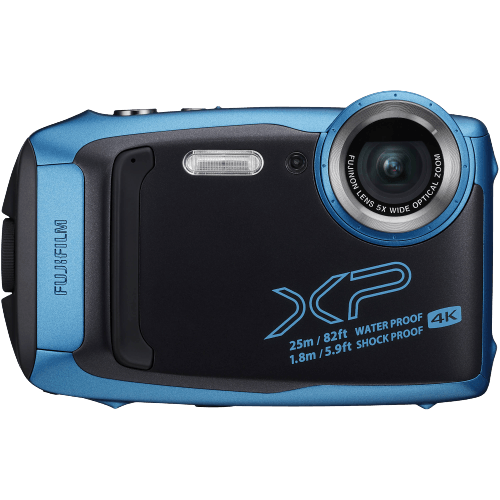
- Durable body withstands drops, knocks, and sub-zero temperatures
- Completely waterproof and functional down to 82 ft (25 m)
- AF has eye-detection modes
- Built-in optical image stabilization for sharper images
- Decent 5x optical zoom lens
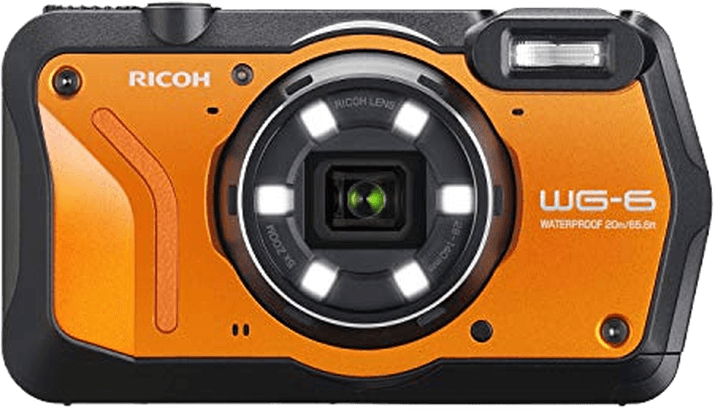
- Very durable waterproof body
- Fast 30 fps continuous shooting
- Movie SR+ anti-shake mode
- Excellent 4K/30p video recording
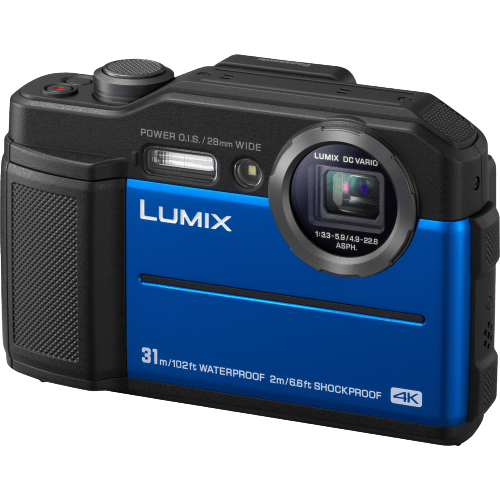
- High-resolution sensor and image quality
- Face detection autofocus
- Optical image stabilization
- 4K video at 24p or 30p

- Incredible photo resolution
- Fantastic 5.3K video resolution for vivid action footage
- 1080p live stream and webcam
- HyperSmooth image stabilization for smooth video recording
- Waterproof down to 33 ft (10 m)
- Best battery life from a GoPro
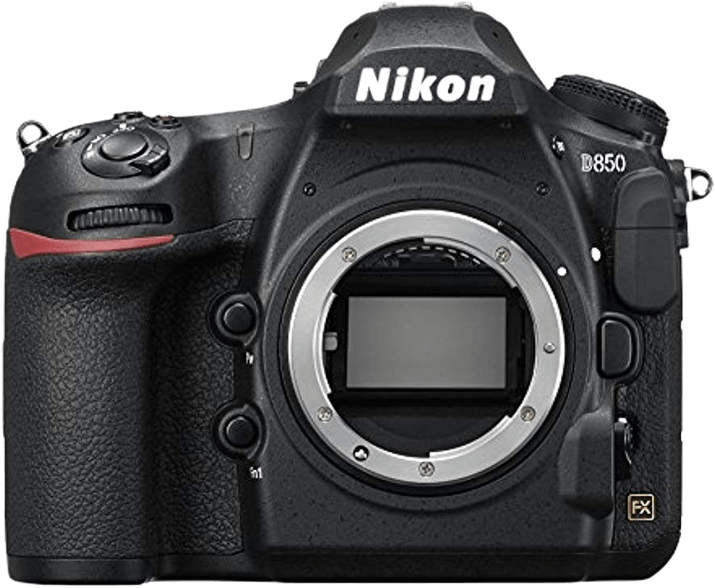
- Fantastic overall image quality
- Excellent 3D continuous AF tracking
- Long, 1,840-shot battery life
- Durable, weather-sealed construction
- Sharp 4K/30p Ultra HD video
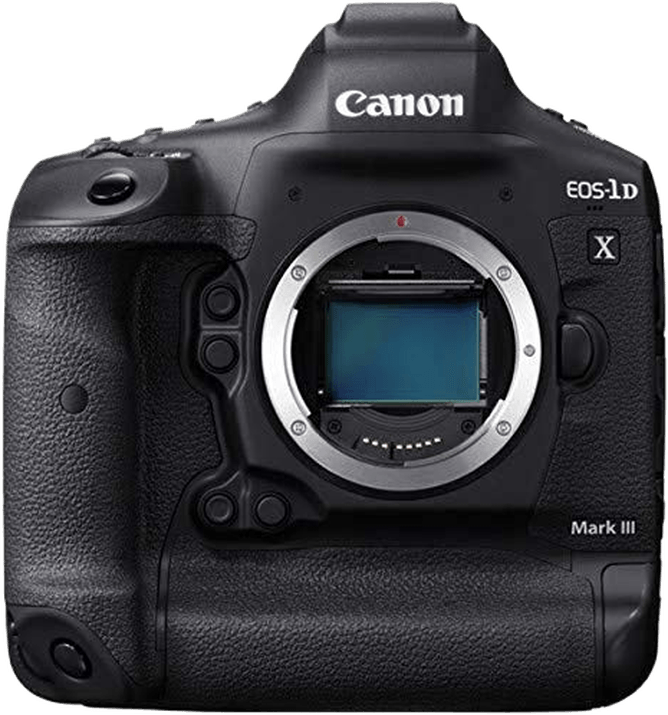
- Excellent low-light capabilities
- Dual Pixel AF and AI detection
- Fantastic buffer for continuous shots
- High frame rate for video recording
- Great battery life
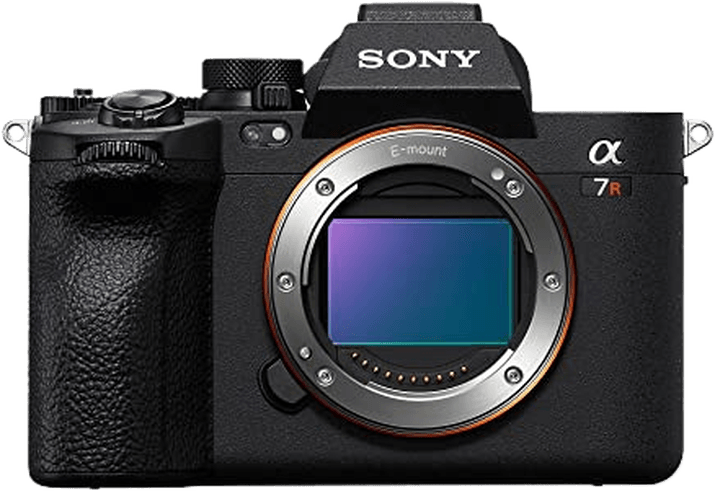
- High-resolution sensor
- Automatic bird or animal eye detection
- Autofocus can track cars, trains, airplanes, and insects
- Big, bright, clear, and sharp electronic viewfinder
- 3.2-inch tilt, flip LCD screen
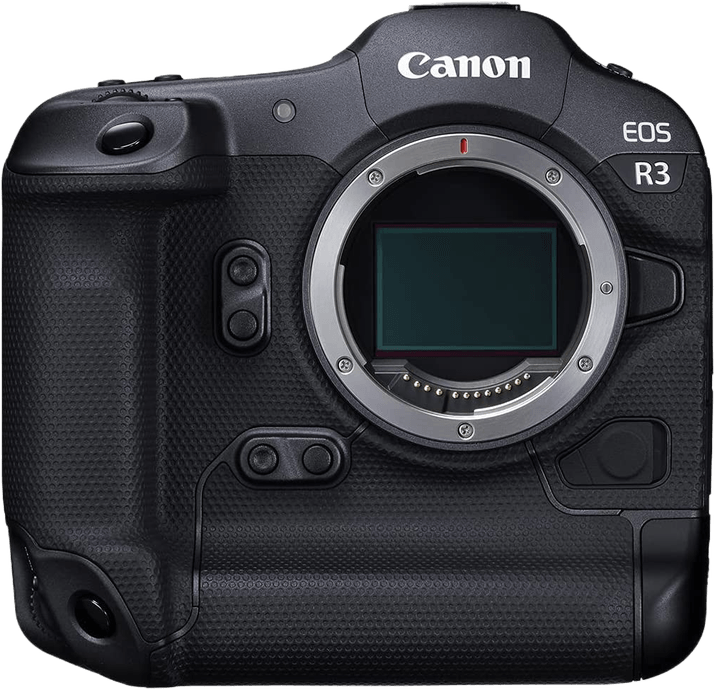
- A high frame rate of 30 fps
- Less noise with BSI stacked sensor
- 8 stops of image stabilization
- 6K / 60p RAW video
- 620-shot battery life
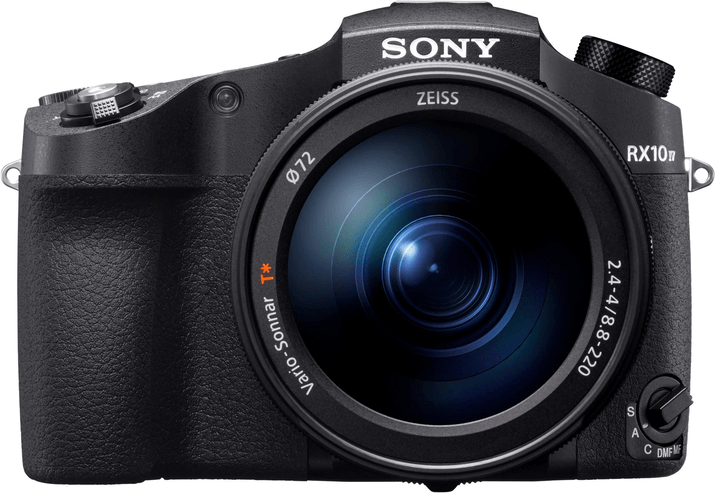
- Impressive 24 fps maximum continuous shooting speed
- Crisp image quality
- Unrivaled lens for a bridge camera
- Incredible 24-600mm zoom range
- 4K video quality
11 Best Rugged Cameras in Detail
Now let’s look at all the rugged cameras in more detail. That includes compacts, action, DSLR, mirrorless, and bridge cameras.
Rugged Compacts
Most of the best waterproof cameras are compact cameras nowadays. And they’re all fairly similar. But here are a few of the best models.
1. Olympus Tough TG-6

| Camera Type |
Camera Type
|
| Megapixels |
Megapixels
12 MP |
| Sensor Format |
Sensor Format
|
| Sensor Size |
Sensor Size
6.17 x 4.55 mm
|
| Frame Rate |
Frame Rate
20 fps |
| Autofocus Points |
Autofocus Points
25 |
- Very strong and durable body
- Waterproof to 50 ft (15.5 m)
- RAW file shooting capabilities
- Excellent macro shooting
- Smooth 4K video recording
- Only 12 MP image resolution
- No fully manual controls
- No touchscreen
- Annoying notifications with Wi-Fi app
The Olympus Tough TG-6 is a premium underwater camera. Everyone seems to think it is the best rugged camera on the market. So who am I to disagree? It’s dustproof, waterproof to 45 ft (15 m), shockproof to 7 ft (2.1 m), and freezeproof to 14F (-10 C).
You get the same TruePic image processor on the Canon OM-D E-M1 Mark II professional camera. And it can shoot low-noise RAW images up to 12,800 ISO. That’s thanks to the 1/2.3-inch 12 MP back-illuminated CMOS image sensor.
It has an f/2.0 4x optical zoom lens. And you get 20 fps shooting, which is as good as the frame rate of the Canon R3. You can also combine that with Pro Capture Mode. And then you can even save frames from before and after you press the shutter!
For macro work, the closest focusing distance is 0.4 inches (1 cm). You also get a vast range of metadata. You get this from the built-in accelerometer, altimeter, compass, GPS, and thermometer. But a Bluetooth connection would’ve been nice.
The fixed 3-inch 1.04M-dot display doesn’t have touchscreen functionality. But it’s as big as the one on my Sony a1!
Finally, you can shoot 4K / 30p video. And that makes it a great little package. You don’t get the image quality of a full-frame camera. But it’s still a great option for vacationers, hikers, underwater, and ski photographers.
2. Nikon W300

| Camera Type |
Camera Type
|
| Megapixels |
Megapixels
16 MP |
| Sensor Format |
Sensor Format
|
| Sensor Size |
Sensor Size
6.17 x 4.55 mm
|
| Frame Rate |
Frame Rate
7 fps |
| Autofocus Points |
Autofocus Points
1 |
- Easy-to-use menus and controls
- Fixed, 5x optical zoom lens
- Small enough to fit in your pocket
- Shockproof, dustproof, and waterproof
- Wi-Fi connectivity, GPS, e-compass, and depth gauge
- 4K Ultra HD with a time-lapse feature
- 16 MP resolution is dated compared to newer compact cameras
- Doesn't have full manual controls
- No RAW file option
- Poor low-light performance
- Difficult physical-control layout
- Still expensive for an old model
The affordable Nikon W300 is dustproof and waterproof to 100 ft (30 m). And it’s shockproof to 8 ft (2.4 m) and freezeproof to +14 F (-10 C). And its weather sealing is even better than the TG-6.
It has the same-sized sensor as the TG-6. Yet it has half the max ISO, a frame rate of only 7 fps, and no RAW file support. But it does offer a slightly higher resolution.
The contrast-detect autofocus system is capable of face detection and subject tracking. The 24-120mm equivalent lens has a 4x digital zoom and image stabilization. And it can also operate at a minimum focusing distance of 1 cm.
The fixed 3-inch LCD is the same size as the one on the TG-6. But it has a slightly lower resolution.
You can also shoot 4K video. You get Bluetooth and Wi-Fi connections through Nikon’s SnapBridge system. And it also has a built-in GPS sensor with an altimeter and depth gauge.
3. Fujifilm FinePix XP140

| Camera Type |
Camera Type
|
| Megapixels |
Megapixels
16 MP |
| Sensor Format |
Sensor Format
|
| Sensor Size |
Sensor Size
6.17 x 4.55 mm
|
| Frame Rate |
Frame Rate
10 fps |
| Autofocus Points |
Autofocus Points
1 |
- Durable body withstands drops, knocks, and sub-zero temperatures
- Completely waterproof and functional down to 82 ft (25 m)
- AF has eye-detection modes
- Built-in optical image stabilization for sharper images
- Decent 5x optical zoom lens
- 16.4 MP not much better than many new smartphones
- No RAW shooting options
- Limited manual photography modes
- Images taken underwater aren't always sharp
- 4K video recording has a slow 15 fps frame rate
The cheap and cheerful Fujifilm FinePix XP140 is dustproof and waterproof to 80 ft (25 m). And it’s shockproof to 5 ft 10 in (1.8 m) and freezeproof to +14 F (-10 C). But the weather sealing is not quite as good as the W300.
It’s a very intuitive and easy-to-use camera. It has the same-sized sensor, the same resolution, and the same lack of RAW file support as the W300.
The lens has a useful range of 28-140mm. And the internally stacked 5x optical zoom means it never sticks out beyond the body. You can shoot at 3, 5, or 10 fps. Plus, there are a few improvements on the previous version (the XP130):
- Better durability
- A new processor and interface
- Eye Detection
- Better Scene Recognition
The display is the standard 3-inch one. But there’s no optical viewfinder. You also get 17 Advanced Filters, such as Rich & Fine and Monochrome. Plus, there’s Bluetooth and Wi-Fi through the Fujifilm Camera Remote app.
The only real downside is the video performance. In theory, you can shoot in 4K. But it’s only available at 15 fps. So you must drop down to Full HD to get smooth enough footage.
4. Ricoh WG-6

| Released |
Released
2019
|
| Megapixels |
Megapixels
20 MP |
| Field of View |
Field of View
75-15 |
| Max Video Resolution |
Max Video Resolution
|
| Slow Motion Speed |
Slow Motion Speed
|
| 360 Shooting |
360 Shooting
|
- Very durable waterproof body
- Fast 30 fps continuous shooting
- Movie SR+ anti-shake mode
- Excellent 4K/30p video recording
- Poor image quality above 800 ISO
- No optical viewfinder
- Built-in memory only has room for three images
- No separate standalone charger
The point-and-shoot Ricoh WG-6 is dustproof, waterproof to 65 ft (20 m), and shockproof to 6 ft 6 inches (2.1 m). It’s also freezeproof to +14 F (-10 C) and crush-proof up to 220 lbf (100 kgf). (Measurements of pound-force and kilogram-forge)
That makes it Ricoh’s most indestructible camera ever. But it still lags behind the W300!
It has a back-illuminated 20 MP 1/2.3-inch sensor. And it operates up to 6400 ISO. But you want to stick to 800 ISO and below for the best results.
There is an internally stacked 28-140mm equivalent zoom lens. And it has six LED macro lights around it. You also get a max frame rate of 30 fps, close focusing at 1 cm, and a handy electronic spirit level.
The display is a standard 3-inch non-touch one. And there’s no optical viewfinder. But you can record good-quality 4K / 30p video. And it’s stabilized by the Movie SR+ anti-shake mode.
It’s available with a wrist strap. But you can also buy a silicon protective jacket or a camera case with a belt loop.
5. Panasonic Lumix DC-TS7

| Camera Type |
Camera Type
|
| Megapixels |
Megapixels
20 MP |
| Sensor Format |
Sensor Format
|
| Sensor Size |
Sensor Size
6.17 x 4.55 mm
|
| Frame Rate |
Frame Rate
10 fps |
| Autofocus Points |
Autofocus Points
49 |
- High-resolution sensor and image quality
- Face detection autofocus
- Optical image stabilization
- 4K video at 24p or 30p
- Maximum aperture is only f/3.3-5.9
- No Bluetooth
- No GPS for
- No 4K high-speed video at 120 fps
The DC-TS7 (DC-FT7 outside North America) is waterproof to 102 ft (31 m) and shockproof to 6 ft 7 inches (2 m). And it’s pressure resistant to 220 lbf (100 kgf) and freezeproof to +14 F (-10 C).
It has a 20.4 MP BSI-CMOS sensor. And the 28-128mm equivalent f/3.3-5.9 lens is optically stabilized. It’s capable of shooting at 10 fps with decent battery life. And the minimum focus distance is 5 cm.
There are many autofocus, flash, metering, and video modes. These include face detection and 49-point tracking. It has a fairly standard 3-inch LCD screen. And it was the first compact camera to have an electronic viewfinder (EVF).
The Panasonic Lumix DC-TS7 can record 4K video at 24 or 30 fps. And there’s also a high-speed mode at 120 fps—but the resolution drops to 1280 x 720 pixels. You also get built-in Wi-Fi but no Bluetooth or GPS feature.
Rugged Action Cameras
Many manufacturers produce action cameras these days. But GoPro is still the go-to brand.
6. GoPro Hero11 Black

| Released |
Released
2022
|
| Megapixels |
Megapixels
27 MP |
| Field of View |
Field of View
155 |
| Max Video Resolution |
Max Video Resolution
|
| Slow Motion Speed |
Slow Motion Speed
|
| 360 Shooting |
360 Shooting
|
- Incredible photo resolution
- Fantastic 5.3K video resolution for vivid action footage
- 1080p live stream and webcam
- HyperSmooth image stabilization for smooth video recording
- Waterproof down to 33 ft (10 m)
- Best battery life from a GoPro
- It isn't a budget-friendly action camera
- Low-light photography performance is disappointing
- Front screen isn't touch sensitive
- Internal audio recording isn't great
- Some additional features require GoPro membership
The GoPro Hero11 Black is the latest of the company’s iconic action cameras. And it’s still as durable and waterproof as ever! It may look like the last few editions since 2019. But it now has a new 8:7 sensor and simplified GoPro Quik software.
One of the joys of owning a GoPro action camera is that you never have to worry about the weather. (Which I suppose makes it the ultimate rugged camera.)
The GoPro Hero11 Black is waterproof to 33 ft (10 m). And a Cold-Weather Enduro battery extends the battery life in arctic conditions. You can’t say fairer than that.
GoPro cameras are better for video than still photography. The extra-large field of view provides immersive 5.3K / 60p or 2.7K / 240p footage. This is optimized by HyperSmooth 5.0 video stabilization with Horizon Lock.
You also get special features like Hindsight, TimeWarp, Star Trails, and Light Painting. But you can still take hi-res, 27 MP images and even capture 24.7 MP stills from the video.
That makes the latest GoPro a great, all-around option. It’s for extreme sports enthusiasts and “doers” rather than “watchers.” All you need to do is strap your GoPro to your helmet, bike, or skateboard, and you’re all set to go!
Rugged DSLRs
DSLR cameras might be on the way out, replaced by modern mirrorless models. But they can still do the job—and the high-end models are tough enough for professionals to use.
7. Nikon D850

| Camera Type |
Camera Type
|
| Megapixels |
Megapixels
45.7 MP |
| Sensor Format |
Sensor Format
|
| Sensor Size |
Sensor Size
23.9 x 35.9 mm
|
| Frame Rate |
Frame Rate
7 fps |
| Autofocus Points |
Autofocus Points
153 |
- Fantastic overall image quality
- Excellent 3D continuous AF tracking
- Long, 1,840-shot battery life
- Durable, weather-sealed construction
- Sharp 4K/30p Ultra HD video
- No customizable shooting presets
- Slow autofocus in Live View
- Needs an expensive XQD card
- Rolling shutter noticeable in 4K video
- Slow 7 fps or 9 fps with an expensive battery grip
I used to have a D850 up until last year when it “died” after being splashed by a wave in the Southern Ocean! Now, you might think that disqualified it from this list. But I think the combination of frigid temperatures and salt water would’ve been too much for most cameras…
The D850’s magnesium alloy body is durable and shock-resistant. It has passed a battery of drop, impact, and vibration tests. It also has extensive weather sealing that protects it against dust and water. But it’s not actually waterproof.
Nikon’s engineers have even tested it by simulating rainfall from different directions. It has an official operating range of 32 to 104 F (0 to 40 C). But it can cope with even more extreme temperatures and humidity levels.
The only problem you might get in a rainstorm is leakage into the viewfinder. But you can prevent that by fitting a BS-3 hot shoe cover.
This is one of the best DSLRs on the market. It has a full-frame sensor with excellent resolution. And the autofocus (AF) is about as good as you can get on a DSLR. My favorite mode was AF-C 3D, which was excellent at tracking moving subjects.
The D850 checks a lot of boxes for a professional photographers camera. That includes resolution, dynamic range, autofocus, battery life, and buffer size… especially if you use XQD cards.
But the main drawback is the frame rate, which is only 7 fps (9 fps with the MB-D18 battery grip). That’s not good enough for action or wildlife photography. And it’s one of the main reasons I switched to the mirrorless Sony a1.
But if you’re a Nikon shooter and prefer a DSLR, then the D850 is as good as it gets. (We have a full Nikon D850 review to check out next if you’re interested in knowing more.)
8. Canon EOS 1D X Mark III

| Camera Type |
Camera Type
|
| Megapixels |
Megapixels
20.1 MP |
| Sensor Format |
Sensor Format
|
| Sensor Size |
Sensor Size
24 x 36 mm
|
| Frame Rate |
Frame Rate
20 fps |
| Autofocus Points |
Autofocus Points
191 |
- Excellent low-light capabilities
- Dual Pixel AF and AI detection
- Fantastic buffer for continuous shots
- High frame rate for video recording
- Great battery life
- Relatively expensive
- Lower megapixel count than closest competitors
- No in-body image stabilization
- A heavy camera body
The weather sealing on the EOS 1D X Mark III is the best you can get on a Canon body. It has protective seals at vulnerable spots like the lens mount and all the buttons and switches. But the camera is still not fully waterproof.
And it would be best if you had a weather-resistant lens with a rubber gasket to complete the seal. These lenses are typically the more expensive ones in the professional L Series.
The EOS 1D X Mark III is the company’s flagship DSLR. It beats the mirrorless EOS R3 in many ways. These include mechanical shutter frame rate, buffer size, and pixel pitch. It’s also more durable and has better battery life.
But the camera provides everything you’d expect from a pro-level body. The 191-point AF system track heads and faces with deep learning AI. And Dual Pixel AF is available for both stills and video in Live View.
You also get 20 fps continuous shooting and a buffer of 1,000 frames. These are ideal for sports and wildlife photography.
Like most Canon cameras, the EOS-1D X Mark III is excellent for video. And it can manage 5.5K footage with a 120 fps high-speed setting. Plus, it comes with built-in Wi-Fi and GPS.
On the downside, the rear LCD screen is fixed. And the sensor resolution is only 20 MP—which is not what you might expect from a camera released in 2020!
Rugged Mirrorless Cameras
Mirrorless cameras outclass other camera types in many ways. But they’re not waterproof cameras by any means. If you’re prepared to accept weather-sealing rather than waterproofing… these are your best options!
9. Sony a7R V

| Camera Type |
Camera Type
|
| Megapixels |
Megapixels
61 MP |
| Sensor Format |
Sensor Format
|
| Sensor Size |
Sensor Size
35.7 x 23.8 mm
|
| Frame Rate |
Frame Rate
10 fps |
| Autofocus Points |
Autofocus Points
693 |
- High-resolution sensor
- Automatic bird or animal eye detection
- Autofocus can track cars, trains, airplanes, and insects
- Big, bright, clear, and sharp electronic viewfinder
- 3.2-inch tilt, flip LCD screen
- Slow frame rate of only 10 fps
- Focus stacking can't be done in-camera
- No in-camera RAW processing
- May be unbalanced with a big lens
- Rolling shutter effect with 8K video
The Sony a7R V‘s weather sealing is top-notch. The magnesium alloy chassis is durable enough. But you also get dust- and moisture-proof seals. There’s also a new anti-dust system. It “shakes” the sensor at 70,000 cycles per second to remove dust and other particles.
You can also set it up, so the mechanical shutter closes when you switch off the camera. That makes it much easier to avoid sensor spots when swapping lenses.
The a7R V is Sony’s latest mirrorless offering. So it offers a mighty package of features. This includes an upgraded autofocus system that even detects insects!
It has a class-leading 61 MP sensor with eight-stop in-body image stabilization (IBIS). And it has the bright and sharp electronic viewfinder borrowed from the a1.
It also boasts a new 4-axis multi-angle LCD monitor. It’s ideal for vlogging, selfies, and live streaming. You can even shoot 8K video with it!
The only downside of the a7R V is the frame rate. It’s 10 fps with its mechanical shutter. And it’s only 7 fps with the electronic shutter. It’s not ideal for action photography.
10. Canon EOS R3

| Camera Type |
Camera Type
|
| Megapixels |
Megapixels
24 MP |
| Sensor Format |
Sensor Format
|
| Sensor Size |
Sensor Size
24 x 36 mm
|
| Frame Rate |
Frame Rate
30 fps |
| Autofocus Points |
Autofocus Points
1,053 |
- A high frame rate of 30 fps
- Less noise with BSI stacked sensor
- 8 stops of image stabilization
- 6K / 60p RAW video
- 620-shot battery life
- Relatively expensive
- Low-resolution for some photographers
- No 8K video
- Slowed frame rate with an SD card or low battery
The Canon EOS R3‘s weather sealing is the same as what you get with the flagship EOS-1D X Mark III. That means there are extra seals. These prevent system failures caused by dust, raindrops, or water splashes. But this is not a truly waterproof camera.
The EOS R3 is Canon’s most expensive mirrorless camera. It’s designed for sports and wildlife photography. And its chief selling point is the 30 fps frame rate. (Now increased by firmware version 1.2.0 to a massive 195 fps with fixed exposure and AF settings.)
It also has Canon’s latest and greatest autofocus system. Dual Pixel AF can detect and track people, animals, and vehicles. And Eye Detect AF lets you focus on any object in the frame just by looking at it!
The durable magnesium alloy body has a built-in vertical grip. And it features a fully articulating touchscreen and a 5.76M-dot EVF. The R3 also has an optical simulation mode that lets you see the actual scene in front of you.
Canon cameras are usually good for video, and the R3 is no exception. It can capture oversampled 4K footage from a 6K sensor area. And there are high-speed 4K / 120p and Full HD / 240 p options.
You also get the usual Canon bells and whistles. Those include headphone and microphone sockets. And there are features such as internal recording of C-Log3 and RAW video. These allow you to do high-quality video edits.
The one drawback is the sensor resolution, which is only 24 MP. But If you can put up with that, the R3 is a marvelous piece of kit. Otherwise, you might be better off with the 45 MP EOS R5.
Rugged Bridge Cameras
I started with a bridge camera. And it was great for zooming in on the wildlife I saw on my first safari. Bridge cameras are water-resistant, not waterproof, but they offer a convenient, all-in-one package.
11. Sony Cybershot RX10 IV

| Camera Type |
Camera Type
|
| Megapixels |
Megapixels
20 MP |
| Sensor Format |
Sensor Format
|
| Sensor Size |
Sensor Size
13.2 x 8.8 mm
|
| Frame Rate |
Frame Rate
24 fps |
| Autofocus Points |
Autofocus Points
315 |
- Impressive 24 fps maximum continuous shooting speed
- Crisp image quality
- Unrivaled lens for a bridge camera
- Incredible 24-600mm zoom range
- 4K video quality
- Expensive price tag
- Not an interchangeable lens camera
- No attached ND filter
- Slow autofocus in video mode
- Heavy for a compact camera
The Sony Cybershot RX10 IV comes with a weatherproof body. Sony defines that as “high resistance to dust and moisture… under rainy, dusty, humid, and other difficult conditions.” Again, it’s not “guaranteed to be 100% waterproof.” But that might be enough in a bridge camera.
The RX10 IV is a premium DSLR-like bridge camera. It has a 20 MP 1-inch stacked BSI-CMOS sensor for high image quality. And it has a 315-point, phase-detect autofocus system (with touch AF)
It features a fantastic 24 fps frame rate and several custom memory options. And it has a sharp, bright, 24-600mm equivalent f/2.4-4 fixed lens.
The video specs are also impressive. It can shoot class-leading 4K footage with hardly any rolling shutter… even with fast-moving subjects! And you get optical image stabilization and high dynamic range. (Thanks to Dynamic Range Optimizer (DRO) and S-Log2.)
There are several high frame rate options. And it also comes with headphone and microphone ports.
But you can’t use the touchscreen to access the menus. You can’t zoom in or out in AF-C mode. And the zoom speed is low. Plus, it’s expensive and heavy for a bridge camera.
Our Verdict
The concept of “rugged cameras” covers a lot of real estate. So to make the best decision, you need to be clear about what you’re looking for. Do you want to throw the camera at the kids when you’re sunbathing on the beach? Waterproof cameras like the Olympus Tough TG-6 will do the job. Do you want to take part in watersports or other activities? Action cameras like the GoPro Hero11 Black will provide the best possible solution.
But a waterproof camera might not be good enough if you’re a bit more ambitious. You might want to raise your sights to a bridge camera like the Sony RX10 IV. And if you’re an enthusiast or pro who wants to work in all conditions? Then I’d choose a DSLR like the Nikon D850 or D780 or a mirrorless camera like the Sony a7R V.

Olympus Tough TG-6
Rugged Camera FAQs
Here are the most-asked questions we get about rugged cameras.
What Is a Rugged Camera?
If you Google “rugged camera,” you’ll see something dustproof, waterproof, freezeproof, and shockproof. But there are “tough” DSLRs and mirrorless cameras that aren’t waterproof. You wouldn’t want to drop them anywhere. But they can handle a few showers. “Ruggedness” is in the eye of the photographer!
What Is a Shockproof Camera?
There are different ways to measure what “shockproof” means. But the usual method is a drop test. The question is… how high can you drop the camera without damaging it or affecting functionality? The answer for a typical compact camera or waterproof camera is usually around 5 to 8 ft (1.5 to 2.5 m).
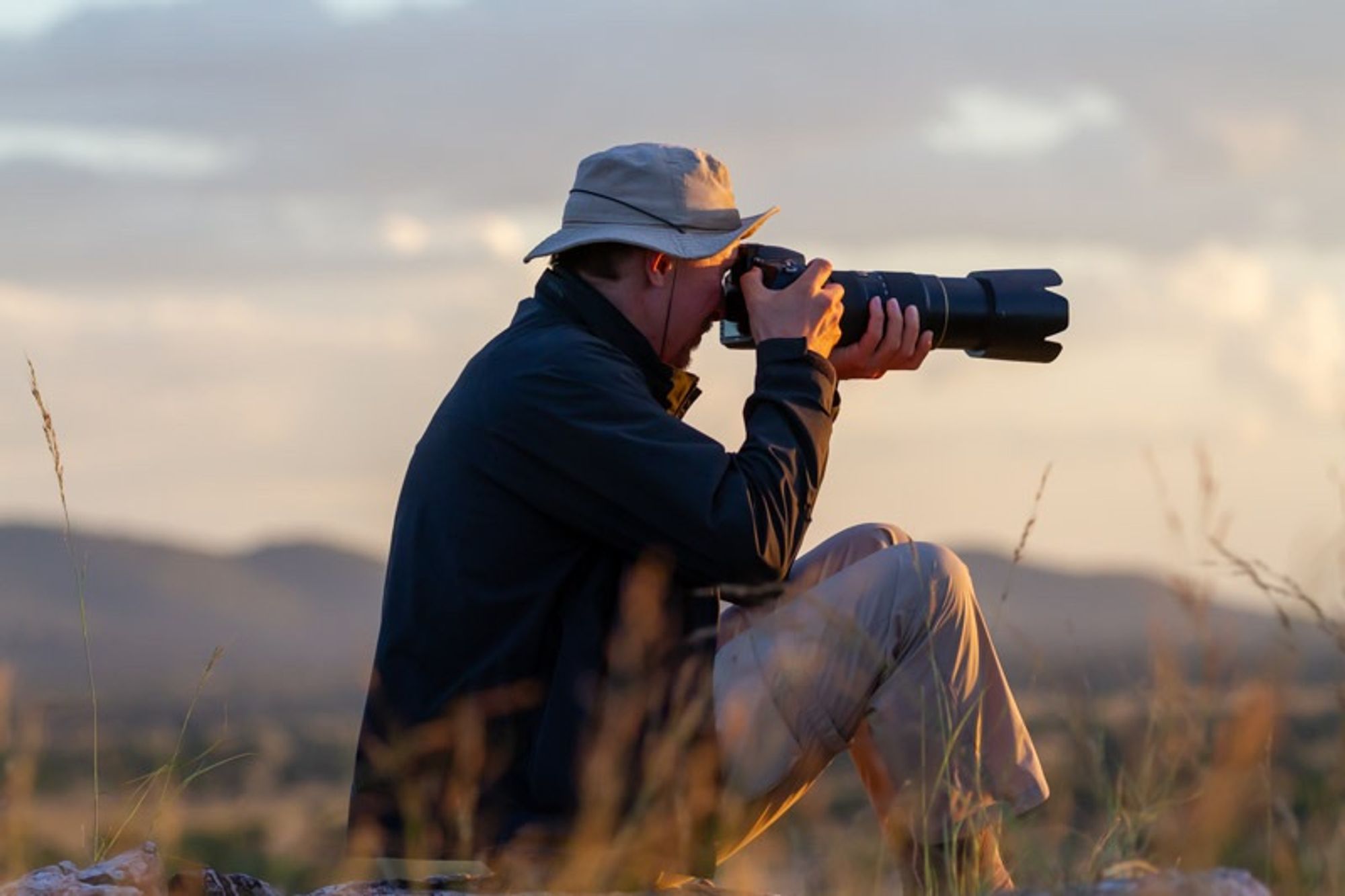
What Is the Best Water-Resistant Camera?
For the best water-resistant camera (not the best waterproof camera)… your best bet is probably a mirrorless model or DSLR. At the top end, you have the Sony a7R V and the Canon EOS R3. But there are a huge number of other cameras with weather sealing.
Are Bridge Cameras More Rugged Than DSLRs?
No. Bridge cameras usually have plastic bodies. So the advantage isn’t really that they offer better weather sealing. It’s just that they aren’t so expensive. So it’s less stressful using them in the pouring rain! I wouldn’t give my Sony a1 to a seven-year-old to play with. But I’d be happy to do that with my old Sony bridge camera!


